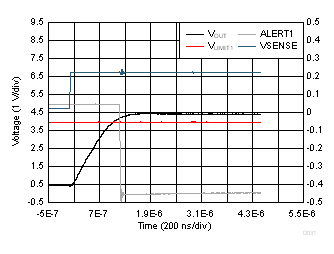SBOS775C September 2016 – March 2019 INA302 , INA303
PRODUCTION DATA.
- 1 Features
- 2 Applications
- 3 Description
- 4 Revision History
- 5 Pin Configuration and Functions
- 6 Specifications
- 7 Detailed Description
- 8 Application and Implementation
- 9 Power Supply Recommendations
- 10Layout
- 11Device and Documentation Support
- 12Mechanical, Packaging, and Orderable Information
Package Options
Mechanical Data (Package|Pins)
- PW|14
Thermal pad, mechanical data (Package|Pins)
Orderable Information
6.6 Typical Characteristics
at TA = 25°C, VREF = VS / 2, VSENSE = 0 V, VS = 5 V, VIN+ = 12 V, and ALERT1, ALERT2 pullup resistors = 10 kΩ (unless otherwise noted)








| VS = 5 V | ||



(Referred to Input)

| 4-VPP output step | ||



| DELAY = 100 kΩ to VS | ||
(INA302)

| VOD = 1 mV | ||











| VS = 0 V | ||



| 4-VPP output step | ||




| DELAY = open | ||
(INA303)

| VOD = 1 mV |




